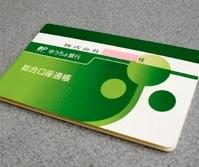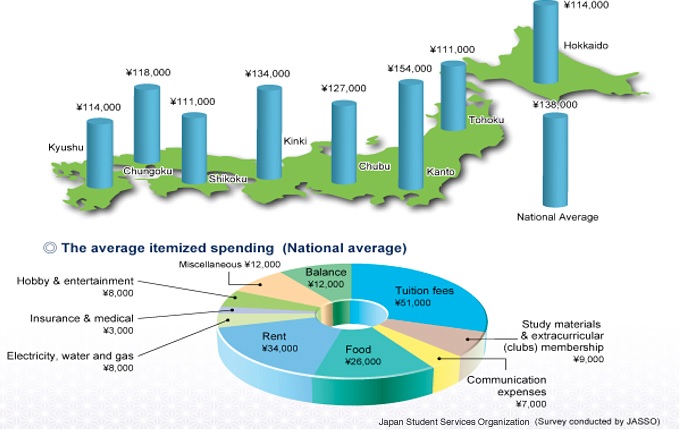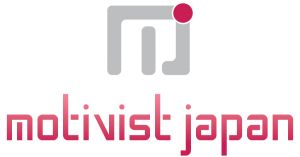MONEY IN JAPAN
When one decides to go study abroad, the first question is always about the money. Before going to Japan, there are a few things one needs to know. So here are some information about Money in Japan.
The Japanese currency is the Yen (¥).
For Exchange rates, please refer to Currency Converter by OANDA.com, The Currency Site.
It is important to note that Japanese people usually pay by cash. So one will often need to go to an ATM to withdraw cash. Thankfully, Japan is a very safe country so there is no reason to be afraid to carry cash.
Shopping, saving money in Japan:
It is a cliche to say that the cost of living in Japan is high. One must simply be smart to find the right places to shop in. People get accustomed quickly to their surroundings and easily find out where to get what and for what price.
Also, there are the famous “100 Yen shops” (Can do, Daiso …) which one can see all over the country. It is possible to find almost everything there. If you need something, it is a must to check the 100 yen shop first before going to other shops.
Check out our blog on how to save money in Japan:
Means of payment:
Japanese people usually pay by cash. Therefore, in order to make life easier in Japan, we do recommend to own a card that can be used in most ATMs. So it is necessary to open a bank account in Japan (see below) to avoid bank fees in case you are using international cards. Also, card issued abroad may not work in ATMS in Japan.
How to open a Bank account in Japan:
Most of Japanese Banks provide foreign currency exchange. For foreign issued cards, some ATM may not be accessible. Please call your bank first before doing any transaction in Japan.
If student intends to study in Japan for more than 3 months, we recommend to open a bank account. It will be convenient (and less costly) to withdraw cash from ATMs with an account in a Japanese bank. Furthermore, monthly bills (rent, phone, water, electricity, gas …) can be withdrawn directly from the bank account through the automatic transfer service, thus avoiding the troubles of having to pay the bills one by one and making sure the payments are timely. When working part-time, that will also be quite convenient.
To open a bank account, you will need your Residence card、Student Card and hanko.

Upon opening your bank account, you will be provided with a debit card and a “bankbook” on which transactions will be printed from the ATM.
When you need to close your account, you only have to bring to your bank your card(s), Residence card, bankbook and your hanko (seal) (if applicable).
To learn more about Japanese banks, formalities and other pertaining information, please click here.
Costs of living in Japan
In order for you to get an idea of the living cost in Japan, we have gathered some common prices for your daily life commodities:
| Products | Qties | Prices (in ¥) |
|---|---|---|
| Water (plastic bottle) | 1.5 liter | 100 |
| Complete meal (inexp. restau.) | 1 person | 800 |
| Eggs | 12 pieces | 200 |
| Milk | 1 liter | 170 |
| Butter | 200 grams | 250 |
| Lettuce | 1 piece | 175 |
| McDonald’s | 1 set | 600 |
| Coca-Cola | 0.33 l. | 150 |
| Coca-Cola (in vending machine) | 0.33 l. | 150 |
| Cappuccino (in a cafe, regular size) | 1 cup | 350 |
| Spaghetti | 250 grams | 200 |
| Toilet paper (pack of 12 rolls) | 1 pack | 300 |
| Gasoline | 1 liter | 150 |
| Smartphone basic subscription | 1 month | 4,000 |
| Internet provider subscription | 1 month | 3,500 |
| Subway ticket (local) | 1 way | 200 |
| Rent (Center of City) studio 1R | 1 month | 80,000 |
| Rent (not in the center) studio 1R | 1 month | 55,000 |
| Rent (Center of City) 3 bedrooms | 1 month | 175,000 |
| Fitness club subscription | 1 month | 8,000 |







